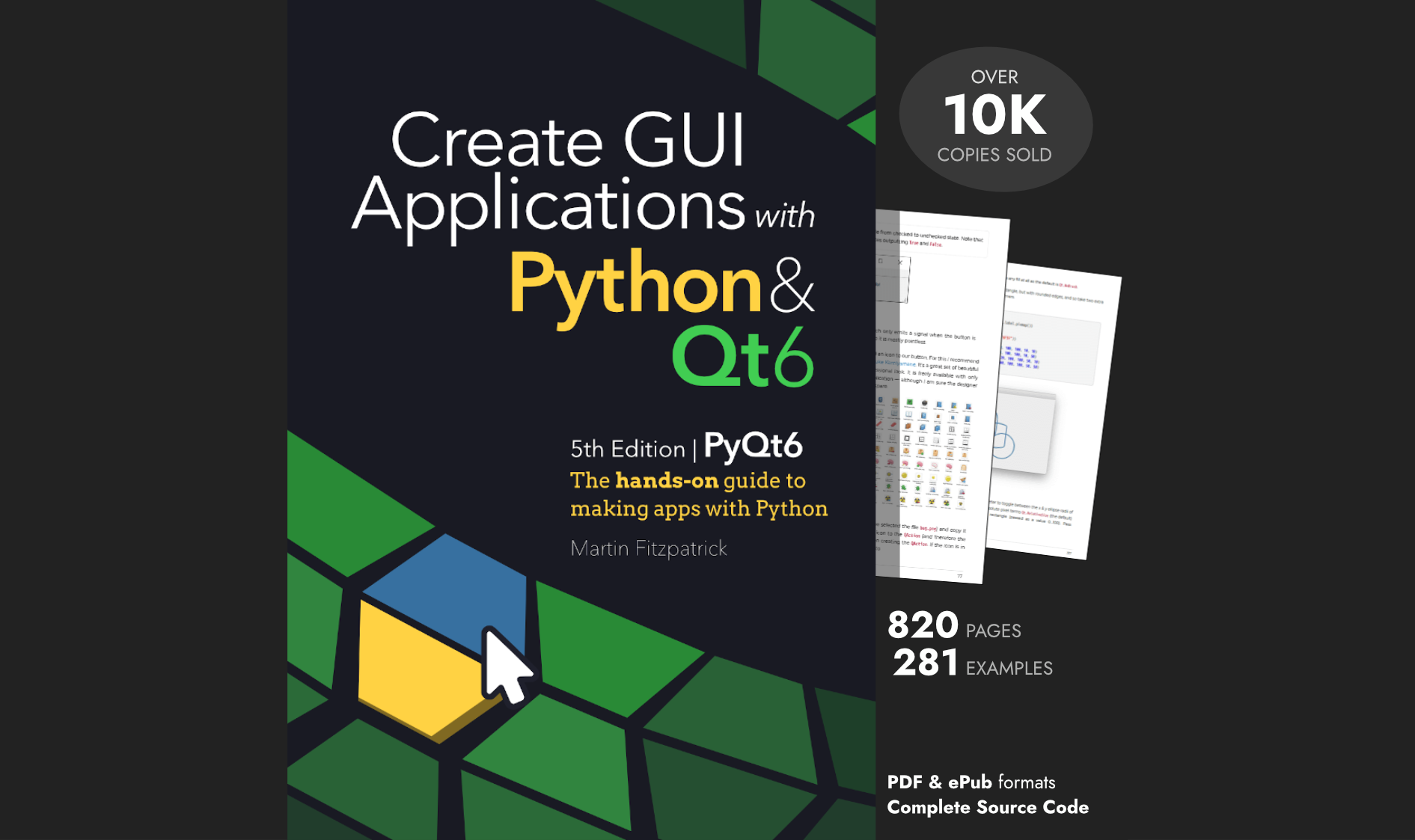Tiago_Piontkewicz | 2020-09-11 20:15:36 UTC | #1
Hello,
trying to package an application following the " Packaging PyQt5 & PySide2 applications for Windows, with PyInstaller" post, I set the icon argument in Pyinstaller like this:
--icon=myicon.ico
The myicon.ico file is inside my resource (qrc), converted to Python code. The command was unsucessful, generating the error "Unable to open icon file myicon.ico".
According to the post " The advantage of this method is that your data files are guaranteed to be bundled as they are treated as code — PyInstaller finds them through the imports in your source."
Is the post wrong orI'm doing something wrong?
martin | 2020-09-11 20:15:47 UTC | #2
Purchasing Power Parity
Developers in [[ country ]] get [[ discount.discount_pc ]]% OFF on all books & courses with code [[ discount.coupon_code ]]Hi @Tiago_Piontkewicz welcome to the forum, and sorry for the slow answer.
It's just a misunderstanding I think --
When you issue the PyInstaller command like this, you're not inside your Python package, so the contents of the QRC file aren't accessible. The QRC is only used from within the Python/PyQt5 code -- PyInstaller doesn't know anything about it.
So you need to pass PyInstaller the full path to the icon file -- it should still exist as a separate file, even if it's being bundled in the QRC file for use in your code.
Create GUI Applications with Python & Qt6 by Martin Fitzpatrick — (PySide6 Edition) The hands-on guide to making apps with Python — Over 15,000 copies sold!
Tiago_Piontkewicz | 2020-07-13 20:38:40 UTC | #3
Understood.
Thanks for clarify this question.
Packaging Python Applications with PyInstaller by Martin Fitzpatrick — This step-by-step guide walks you through packaging your own Python applications from simple examples to complete installers and signed executables.

